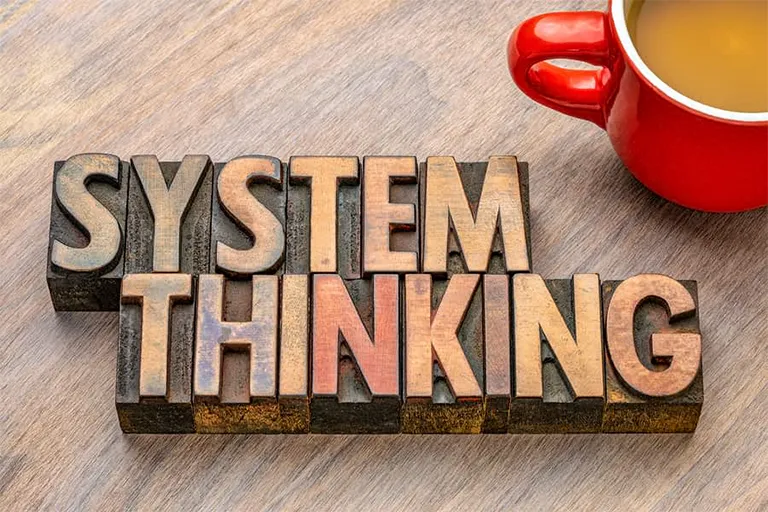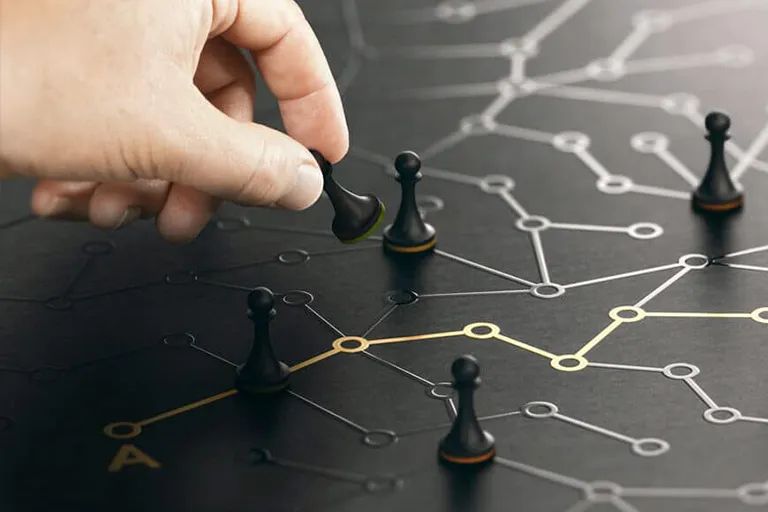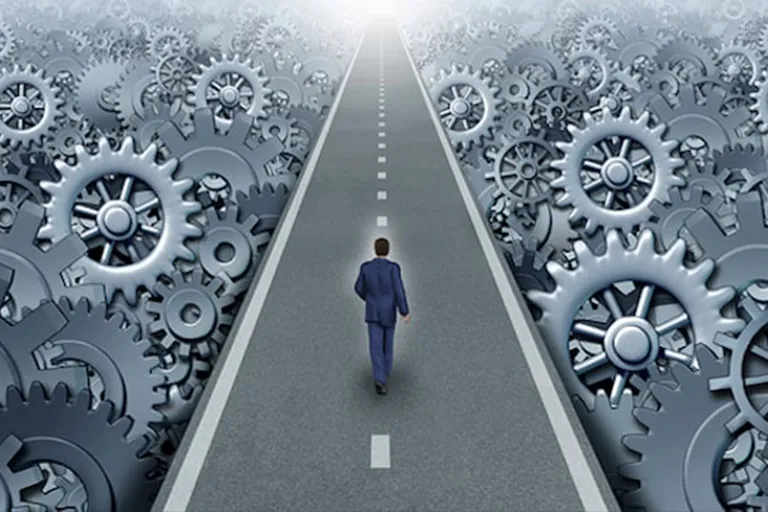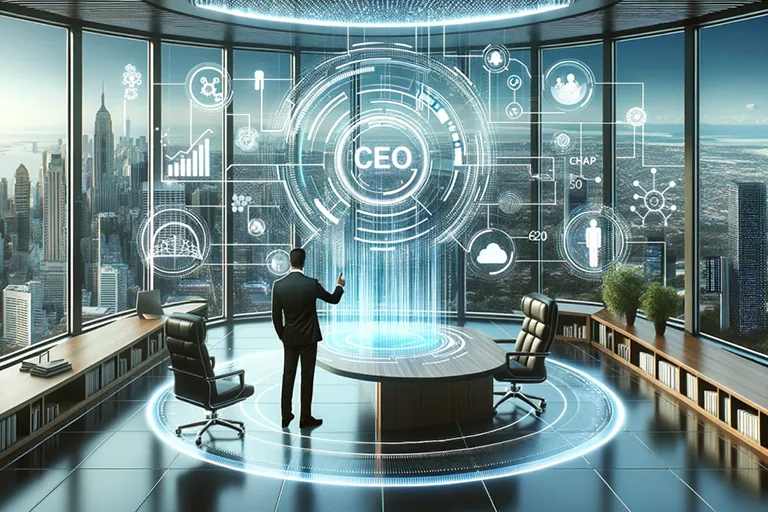Anyone who has experienced group activity, teamwork, and organizational work, or who has spent a short time trying to educate others, knows what systems thinking is and has experienced that one of the major weaknesses in many Less developed cultures are weak in systems thinking .
Consider these examples:
A few years ago, Behdad was experiencing a lot of anxiety due to life problems. One of his friends was a smoker and suggested him to smoke to reduce his anxiety. In the first days, smoking reduced his anxiety. But after some time, his body got used to smoking. Now, when he was not smoking, he also experienced increased anxiety and tension. Cigarettes, which once seemed like a solution, were now added to Behdad’s previous problems.
About ten years ago, it became clear that there was a theft in the warehouse of a factory. The factory managers were suspicious of the storekeeper. But changing the storekeeper did not solve the problem. They increased the number of storekeepers to three in each shift to make theft more difficult. The thefts decreased for a while but continued again. They hired more storekeepers. It happened again. Temporary decrease and increase again. They put a new guard booth outside the warehouse to keep an eye on the warehouse keepers. The theft decreased for a while and then increased again. The addition of guards only increased the amount of theft. Because now more people should have received silence.
The cost of providing housing, both buying and renting, has increased. The government sees the root of the problem in housing supply. Cheap housing is built around big cities. People migrate from smaller cities to bigger cities and settle in these houses. The government makes rules that the owners must be residents of the city itself. People buy a cheap house and rent it to immigrants and put that rent on their income and rent a place in the city. The population of the city will eventually increase, and with the gradual transfer from the suburbs to the city, the demand for housing will increase, and everything will be the same as a few years ago: high costs and poor quality of life. During this time, only a part of the public resources is gone.
There are many such examples. We set goals and choose a path that seems to lead us to our goal. It is the same at first.
But gradually we realize that our distance from the goal has become further and further away. We see a problem and choose a solution that seems like it should solve the problem. It really happens in the beginning. But after a while, we see that the previous problem has appeared in a bigger form, or if it has been solved, a more serious problem has arisen elsewhere. System thinking is a science that helps us make less mistakes and pay less for problem-causing solutions.
To learn more about systemic thinking, we will discuss four topics in a simple and concise way:
- What is meant by system?
- How do we know that our system understanding is weak?
- What are the characteristics of systems thinking?
- Is systemic thinking only for managers and policy makers?
What is meant by system?
In order to better understand what a system is and what systems thinking means, it is good to start from a place where there is no system yet.
Imagine a person walking in the desert and sees a small stone in front of his feet. For fun, he kicks the stone and it falls to the ground a few meters away. it’s all over. The desert is in a new state, where only one stone is different from the previous state, and probably no one will notice this change until the day when the earth and earthlings are gone.
Now imagine another person walking in the city. He also sees a small stone in front of his feet. And he also kicks rocks for fun. He has defined a simple game in his mind and wants to aim at the base of the electric light pole.
But he makes a slight mistake in aiming and the stone hits a car parked nearby. Someone nearby sees him and says I saw you throw stones at that car. Leave a letter on the car and apologize. The kicker of our story resists and says it has nothing to do with you.
You can make the second story as long as you want and create a scenario in your mind. For example, the owner of the car may get in between and a physical conflict occurs. A person may even be injured and go to the hospital.
Or if you don’t like this level of violence, the story ends happily and both parties agree to pay damages. Providing money to pay damages can be a new story. For example, he has to borrow money from someone for now and…
It is clear that in the second story, it is exaggerated. A kick does not necessarily create such a long chain of events. But on the other hand, the probability of such problems is not low. We all know that sometimes a hard brake on the street has led to verbal and physical conflict and even death.
But we are not going to get involved in the details. It is important to accept the self-evident fact that kicking a rock in a secluded desert is easier and has fewer risks and consequences than kicking the same rock in a busy city.
Imagine two different worlds. The first world is like that deserted desert, and it seems that whatever you do there, it disappears and disappears, leaving no trace of it. But the second world is like that crowded city and everything is tied together and everything is connected to other things, even the simplest actions and behaviors may end up with strange and unexpected results. During recent centuries, we have come closer than ever to this second world: “the world of systems”.
Life in today’s world is full of entanglement. In simple words, it is as if everything is tied together.
A decision in the field of economy creates a challenge in the field of culture and an action in the field of culture affects the price of energy. A factory is established in the Far East. But its produced gases remain in the atmosphere and intensify the greenhouse effect in all parts of the earth. The people of a country pay taxes and that country participates in a military coalition in another part of the world.
The system is exactly that. System means interwoven and nested communications. That is, several components that are all connected to each other and changes in each affect the other. It is even possible that today’s action will lead to a series of changes and finally, its effect – positive or negative – will return to the person taking the action after a long time, and this path will be so vague and complicated that the person or organization cannot recognize that they are experiencing the consequences of their action. he does.
When we talk about the system, we mean a set of many components and parts that have interwoven relationships and you cannot touch and change one part of it without the other parts being affected and reacting.
Of course, this view is not so new. Our ancestors who said “You do good and throw yourself in the Tigris” and believed that “God will give you back in the desert” had such an attitude. With the difference that at that time, it was only a matter of belief and there was no specific mechanism for it. But today we believe that we know many mechanisms. Of course, another complication is that we are familiar with theories such as chaos theory and we know that sometimes when you do good and throw in the Tigris, you may get a completely different result depending on how many centimeters you “throw” here or there, and in a distant desert, Instead of “Baz”, you get another animal that you didn’t expect at all.
Why is our system understanding weak?
The bitter reality is that the system understanding of all of us is somehow weak; Especially if the discussion is extended to economic, social and political systems.
The reason is clear. Macro systems are the result of the interaction of millions and billions of people, hundreds of thousands of organizations, billions of processes, a multitude of basic rules and random disturbances. It is as if we have a brain in front of us, each neuron of which is a human being, who has hundreds of billions of neurons in his mind! Our brain can never understand a “superbrain” correctly.
We usually try to understand subsystems; It is as weak as our mind. Someone who studies economics wants to better understand economic systems. Of course, in that area, his understanding is probably limited to a small part of the economy. A person who becomes a doctor has only gone to one subsystem of the world’s systems: the human body system. A system that is almost nothing compared to all the systems in the world and is considered zero.
In addition, from this subsystem, he chooses another subsystem and becomes an expert in digestion, for example. In the same very small subsystem, he does not gain absolute control and still sometimes he has to resort to guesswork and trial and error. So:
It is not a realistic expectation to have a very strong system understanding. As soon as we can understand our weakness in systemic view, and get from total systemic blindness to very poor vision, we have made a great achievement. Knowing about weaknesses and inabilities is a form of empowerment and can prevent big and costly mistakes.
So, for the first step, we should try to familiarize ourselves with the features of systemic thinking and see in what cases we have distanced ourselves from these features in our analysis, decisions, and finding solutions.
Characteristics of systems thinking
Many features can be listed for systemic thinking, but for now, the following can be mentioned in a few points:
Unlimited effect range
The most important characteristic of systems thinking is that it does not see any action or behavior as “done”. The scope of an action expands from a moment to infinity; Both in time and in place.
We understand this more easily with some actions. For example, we realize that when a child is born, the world finds a new situation that is no longer the same as before. But we may not notice that when a repairman does not tighten one of the screws of the car well, the scope of the effect of this behavior can continue indefinitely and a chain of events may be formed whose effect is greater than the birth or non-birth of a baby.
Systems response delay
Systems have many components and when we make a change in one corner of the system, it takes some time to see its effect in other parts. This period may be a few seconds, a few years or even a few centuries.
It is not easy to understand such delays for the caveman, who threw an arrow and a few seconds later, the game fell on the ground before his eyes, and the farmer, who planted and killed the land and harvested the crop in a relatively short period of time.
Our brains (which have been purely hunter-gatherers for a large part of our several hundred thousand years of life on Earth) understand cause and effect over short time intervals. We understand that if we knock on the door and the same sound comes from the door, that sound is the result of our knock. But if we knock on the door and fifty years later it makes a sound, it is hard for us to accept that this sound is the result of our knock. Meanwhile, the world of systems is full of these delayed events.
The importance of trends versus events
Many of the behaviors we see in systems do not happen instantaneously. Rather, they are formed in the form of a process. Here too, our mind is used to seeing events.
It is true that a person dies from a stroke at a specific moment, but the cause of this stroke has been with him for years. Improper nutrition, low physical activity, and dozens of other factors gradually affect his body system, and we end up seeing the “event” of a stroke instead of this “process.”
The separation of a couple, the bankruptcy of a company, the collapse of the Berlin Wall, and even the spark of an idea in the mind (which is usually considered a momentary event) all have hidden and visible processes behind them that directly or indirectly contribute to their formation. has done.
Being multi causal
Why has the value of the country’s currency decreased in recent years? Why is the market share of our product low (or high)? Why has immigration increased among the educated? Why is the quality of our automotive industry products not good? Why do I feel tired and exhausted? Why the friendship that I had built in twenty years was destroyed in an instant? Why do people read books less than before? Why do people go to external messengers instead of internal messengers? Why is the output of our universities not so attractive for the industry? Why was there a revolution in Iran in 1957?
These questions are very diverse in appearance. But their common feature is that they are related to the behavior and state of the systems. The type of these questions, with a question like “Why did the glass break?” which has a simple and specific answer (for example: my hand hit it) is different. Questions related to the behavior and state of systems are usually multi-rooted. Several causes have joined hands to make something happen. Whether the causes formed a chain or a set of them acted simultaneously is another issue that analysts can think about.
The bottom line is that if you see someone offering a single-cause explanation in explaining a complex phenomenon, it’s likely that they don’t have much understanding of systems thinking.
Is systemic thinking related to managers and policy makers?
Definitely not. Systemic thinking can be used in the family environment, raising children, planning for personal development, negotiation, emotional relationship and dozens of other areas.
However, usually the best examples for learning systems thinking are management systems and societal and policy issues. Because the scale of these systems is large and they are easier to see, and also because they are the common experience of many of us, they can be considered as the starting point for learning systems thinking.
But you should always remember that almost everything in today’s world is in the realm of systems. From the plastic bag and mobile battery that we throw away, to the investment decisions that we make and to the laws that politicians make and apply to countries.












